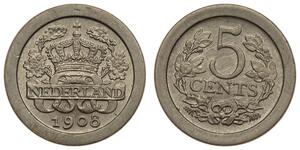[ 3498] Alexander III, the Great: Macedonian Greek King: 336-323 B.C. Roman Era, Olympic-Style Games Issue Bronze( 27mm, 10.33 grm.) from the Koinon of Macedonia in Thrace under Roman Control Struck circa 222-235 A.D. under the reign of Roman Emperor Severus Alexander AΛЄΞANΔPOV, Draped bust of Alexander the Great right with loose, flowing hair. KOINON MAKЄΔONΩN, Two four-column temples in 3 dimensional perspective with B above in at center. * Numismatic Note: Leaders like Julius Caesar and the Romans and the Greeks alike had immense respect for the great accomplishments of Alexander the Great. Macedonia, being the kingdom of Alexander the Great's birth, this coin featuring his likeness heralds the Neocorate status of the area, along with the Olympic-style games that accompanied it. Highly-coveted type. Provided with certificate of authenticity. CERTIFIED AUTHENTIC by Sergey Nechayev, PhD - Numismatic Expert The provincial coinage issued in the name of a district council (KOINON) was not very common at the time of Augustus and the formation of provincial Roman governments. Most cities issued coinage in their own names - either as autonomous or as individual subjects of the emperor or a client king. In fact, the koina never became very widespread in practice or authority. From inscriptions on provincial coins, we know of koina in Macedon and Thessaly in Greece - also on the islands of Lesbos, Crete and Cyprus. The remainder were from the East. In theory, the koinon may be likened to a federation where representatives of each city in the district form an assembly with a democratic voice. In practice, however, they had very limited powers. One of their main functions was the organization of festivals and games in favor of the imperial cult. The allusion to these games is normally seen in the legends or iconography of the coins which they issued. Other typical images are the temple of the koinon or personifications of the Senate The koina should not be thought of as independent political powers. They were, of course, under Roman control. In fact, the Roman proconsul or provincial governor is sometimes named on these coins. Neocorus was a Greek title which designated the individual who had charge of the interior of a temple and looked out for the temple's needs. In Roman times, provincial Greek cities often styled themselves as the neocori of the imperial cult. This was an obvious form of flattery, which insinuated the godliness of the emperor and indicated the city's devotion and loyalty. The neocorate of a city was a great and coveted honor, and not one which was presumed arbitrarily. The emperor allowed the bestowing of this right only to cities which had earned the status. Consequently, cities were eager to announce this consideration and usually did so on their coinage. The proclamation of a neocorate on coins was often accompanied by a depiction of the temple. Originally, it was imperial policy that only one neocorate would be allowed in a city. This rule was later relaxed, and several cities were allowed two or more neocorates. The subsequent awards were depicted on coins by showing two or three temples along with an appropriate inscription. The first neocorate of a city was usually mentioned in the inscription simply as NEΩKOPΩN. The second appeared as B NEΩKOPΩN, the third as F NEΩKOPΩN (e.g. Pergamum). The approval of neocorate was usually accompanied by games and festivals. The coins struck for these events often displayed a combination of neocorate and agonistic imagery. Like the number of temples depicted, there also seems to be a correlation between the imagery and the award on some of the "games" issues. Although this may be coincidental, coins bearing the single NEOKOPOC often have a singular agonistic crown or urn, which is in the center field between the temples. Those indicating a second or subsequent neocorate have two or more crowns. The iconography of neocorate and agonistic ...
type to read more

|
Posted by:
anonymous 2015-08-19 |
Similar Coin Groups
2025-05-25
- New coin is added to 5 Cent Netherlands
5 Cent Netherlands
group has 11 coins / 8 prices
⇑
Netherlands - 5 Cents 1908 - Wilhelmina
2025-05-24
- New coin is added to 1 Liard Belgium Copper
1 Liard Belgium Copper
group has 4 coins / 4 prices
⇑
Austrian Netherlands - Liard 1790 - Head
You may be interested in ...























